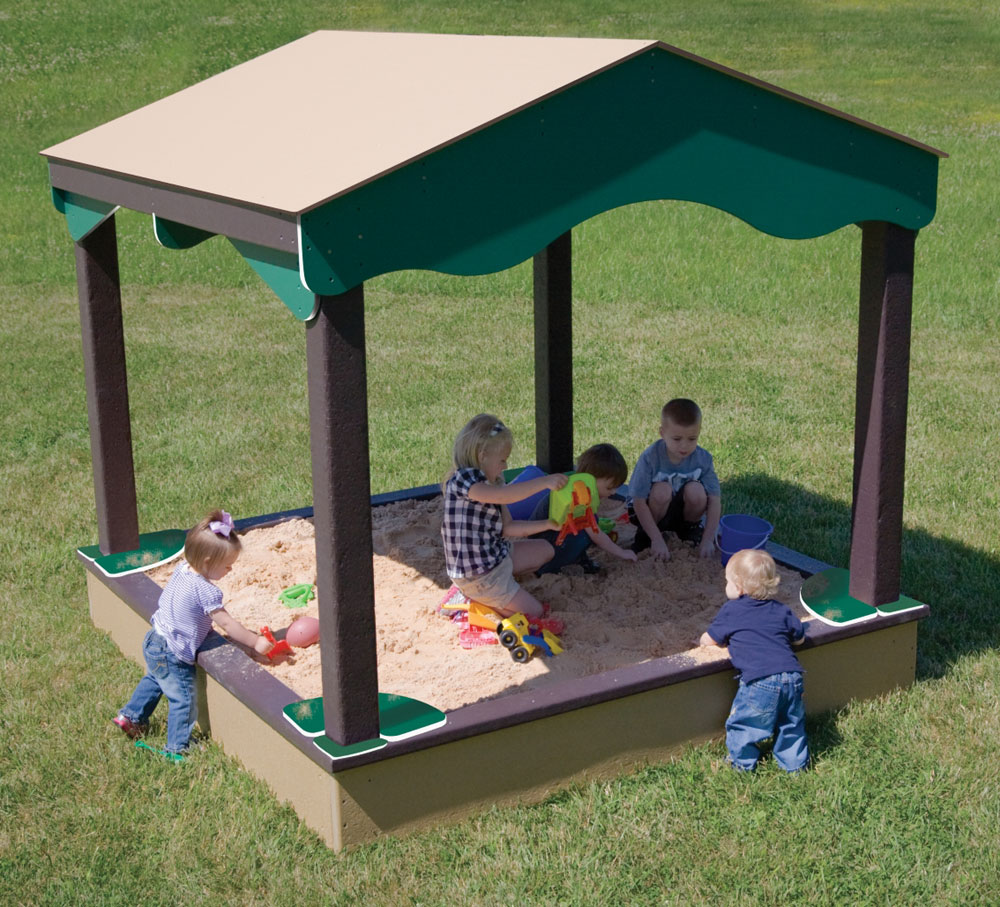Sandboxes have long been a staple of childhood play—a miniature world where castles rise, roads form, and imaginations take flight. Let’s dig into its rich history and how it has evolved into a modern play essential that’s safer, more inclusive, and environmentally conscious.
A Grain of History
The concept of sand play dates back to 19th-century Germany, where Friedrich Fröbel championed sand gardens as a vital part of early childhood education. They soon made their way to the U.S., first appearing in Boston in 1885 as part of a movement to provide children in urban areas with safe play spaces.
For many years sandboxes were literally boxes—often wooden, and filled with naturally sourced sand. The goal was simple: provide a space for free play and creativity in a controlled environment. And it worked. Children flocked to these boxes, developing motor skills, social interaction, and imaginative play all at once.

Material Shifts: From Wood and Sand to Modern Marvels
Early sandboxes featured untreated wood and natural sand but rotted quickly and attracted pests. Luckily, materials have since evolved to be safer, sturdier, and easier to maintain.
- Wood to Plastic & Composite: Modern sandboxes often feature high-density plastic or recycled composite materials that resist weathering and splinters, extending their lifespan and reducing injury risks.
- Traditional Sand to Washed, Filtered Play Sand: Today’s play sand is typically silica-free and carefully screened to remove debris, dust, and potential allergens, addressing growing concerns about inhalation and contamination.
- Borders and Bases: Raised edges, rubberized borders, and weed-barrier fabric bases have become common to improve safety and reduce the spread of sand beyond its intended area.
From Oversight to Overhaul
Eco-Friendly Upgrades
With sustainability in mind, playground designers have increasingly turned to:
- Recycled Materials: Using reclaimed plastic for sandbox borders and eco-friendly wood substitutes.
- Natural Landscaping: Integrating sand play into natural playscapes with logs, stones, and plants to create a more holistic and environmentally friendly play area.
Today’s sandboxes are more than just simple square pits—they’re thoughtfully designed play environments that encourage creativity, inclusivity, and hands-on learning. Modern innovations have transformed these classic spaces into dynamic experiences for all children:
- Sensory Tables: Elevated sand tables make play more accessible for children with mobility challenges, allowing them to dig, pour, and build without needing to sit on the ground.
- Interactive Features: Add-ons like funnels, scoops, diggers, and water channels introduce elements of STEAM (Science, Technology, Engineering, Art, and Math) learning, turning sand play into a hands-on exploration of basic physics and engineering concepts.
- Modular Sand Zones: Some playgrounds now feature full sand “labs” with rotating tools, conveyor belts, dams, and towers—mini construction sites that inspire imaginative role play and problem-solving.
- Water & Gravel Elements: Many modern sand play areas now incorporate additional materials like smooth gravel and flowing water. Some are free-standing units where children can pour sand, gravel, or water through tunnels, chutes, and channels—engaging their senses and teaching cause-and-effect through open-ended play.
- Shade Structures & Canopies: To protect children from sun exposure and overheating, many modern sandboxes include UV-resistant covers or permanent shade elements that keep play areas cool and comfortable.
The Sandbox Today: More Than Just Sand
In today’s world of tech-driven toys and fast-paced schedules, the sandbox remains an educational haven for creativity and tactile exploration. It’s more than a place to dig—it’s a sensory-rich environment that encourages problem-solving, collaboration, and imaginative thinking.

